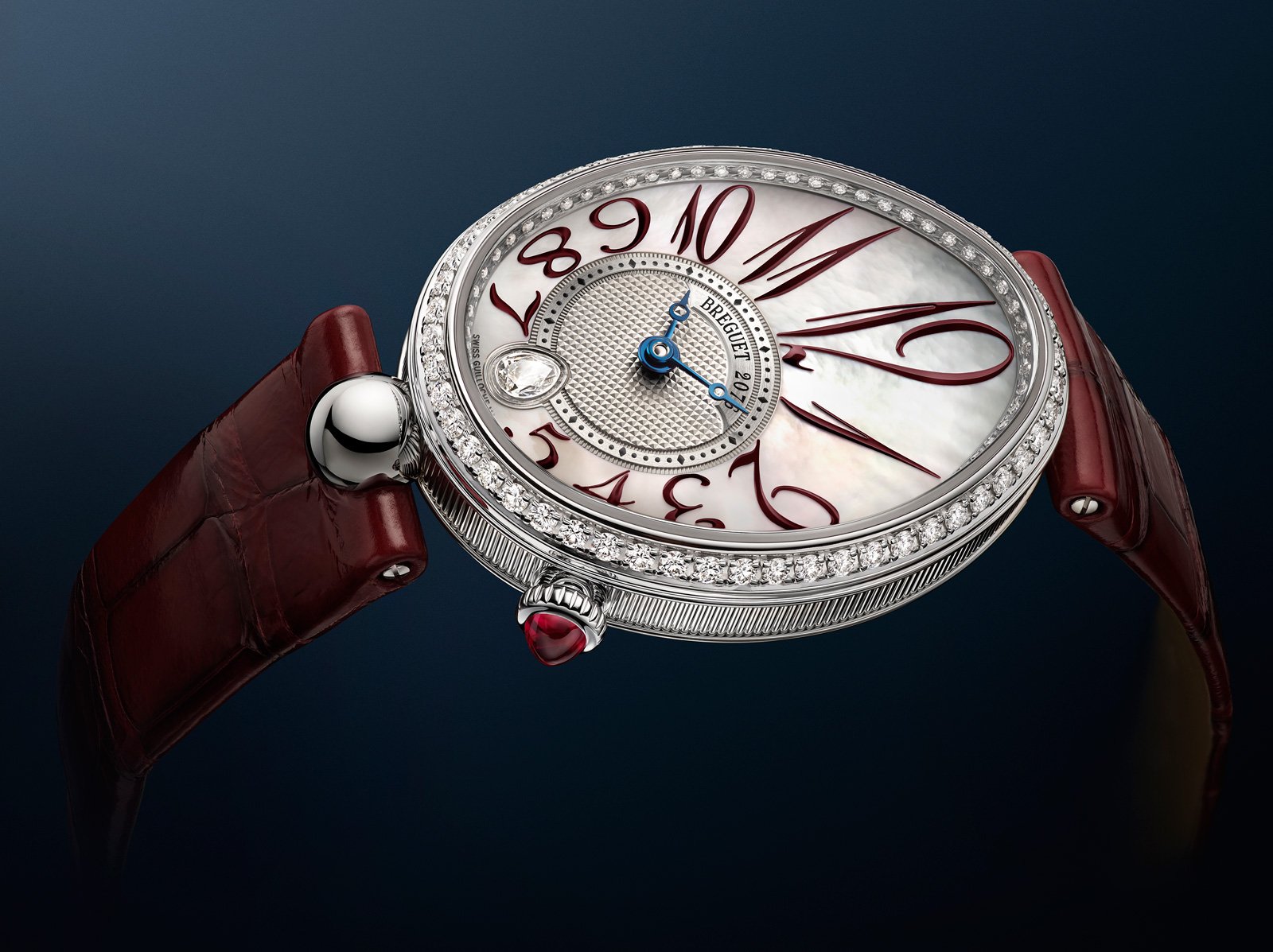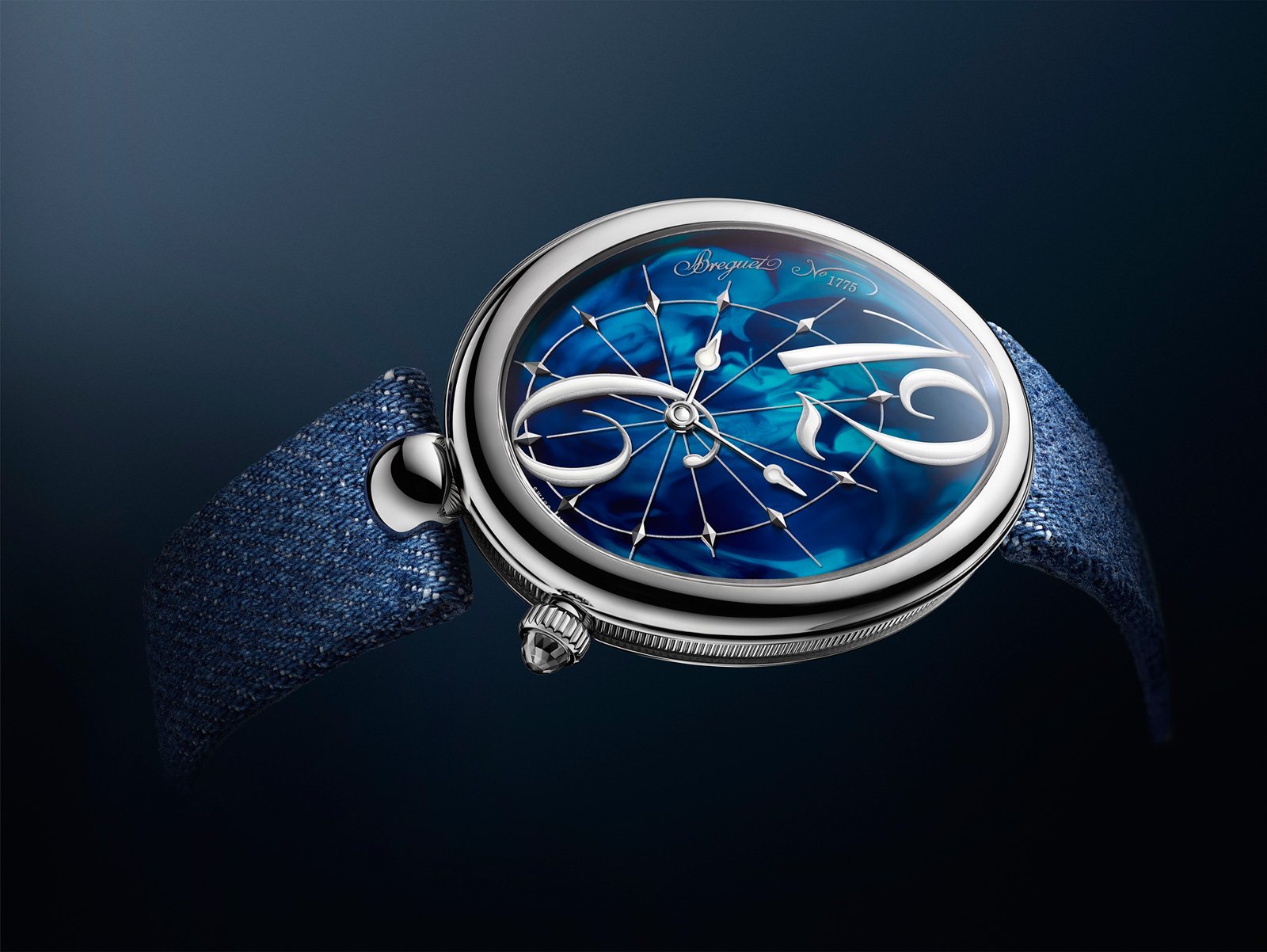n 1983, when Breguet had belonged to the Chaumet brothers since 1970 and was managed by François Bodet, who has repositioned the declining brand in the high-end segment, Europa Star presented the five stylistic codes that defined Breguet’s watchmaking style: the fluted cases, the delicately rounded horns, the hand-guilloché dials with the signature in a rounded and hollowed window, the “apple” hands and the pin buckle.
-

- Breguet’s timeless codes, as presented in Europa Star in 1983. Breguet belonged then to the Chaumet brothers from Paris.
- © Europa Star Archives
It must be emphasised that, despite all the ups and downs the company has suffered (the Chaumet brothers filed for bankruptcy in 1987 and were found guilty of “bankruptcy, fraud, breach of trust and illegal practice of the banking profession”; on the same date, Breguet was taken over by Investcorp, a Bahrain investment fund determined to build a high-end luxury group, before being acquired by Nicolas Hayek in 1999), the Breguet style, so recognisable, has not changed much.
This continuity is perfectly reflected in the new models recently introduced for 2019.
-

- The 2019 Breguet Classique 9068. It should be noted that the milled case, the specific shape of the lugs and hands, the layout and typography of the indexes, and the pin buckle remain in accordance with previous codes.
A sleeping beauty awakes
When Nicolas Hayek took over Breguet, the brand was a sleeping beauty. He awakened it vigorously by investing in the creation of a genuine dedicated factory, creating exceptional models, introducing silicon, filing 77 new patents, producing one new movement per year, and creating an unceasing buzz around the brand. With strength and determination, Hayek put the brand back in the central position that the historical importance of its watchmaker naturally conferred on it. But he did so while remaining true to the aesthetics and codes defined in previous decades.
This policy proved to be a winner, as Hayek explained to Europa Star seven years later, in 2006, when the brand was launching two watches, the Tradition and the Queen of Naples, that deviated from these strict codes. But they nevertheless remained broadly within the lines.
-

- Interview with Nicolas Hayek on the development of Breguet, in Europa Star 1/2006.
- © Europa Star Archives
The Marine collection
In 1815, Abraham-Louis Breguet was appointed by Louis XVIII Horologer to the French Royal Navy. Since then, the links between the brand and the nautical world have remained strong. This is reflected in the long line of timepieces in the Marine collection.
-

- A 1999 Marine Chronograph model for women, presented at the SIHH while Breguet was in its final months under the leadership of Investcorp. This automatic chronograph, one of the flattest and smallest of its generation, confirmed the brand as a pioneer. Published in Europa Star 2/1999.
- © Europa Star Archives
Stylistically, in 2019, the codes are still present, but with a more sporty appearance. The Marine 2019 collection includes three new models with a satin-finished and polished titanium case and bracelet (a metal that is particularly resistant to corrosion and salt air): a three-hand 40 mm, a chronograph and the Marine Musical Alarm Automatic.
All three feature a gold sunray slate dial, “apple” hands and luminescent 5-minute markers, as well as thick Roman numerals, all giving priority to legibility and a certain sobriety.
-

- Breguet Marine Chronograph 5527 from 2019. The watch has been “professionalised”: the famous “apple” hands are coated with luminescent material, as are the Roman numerals, which have are thicker, and alternate with luminescent markers.
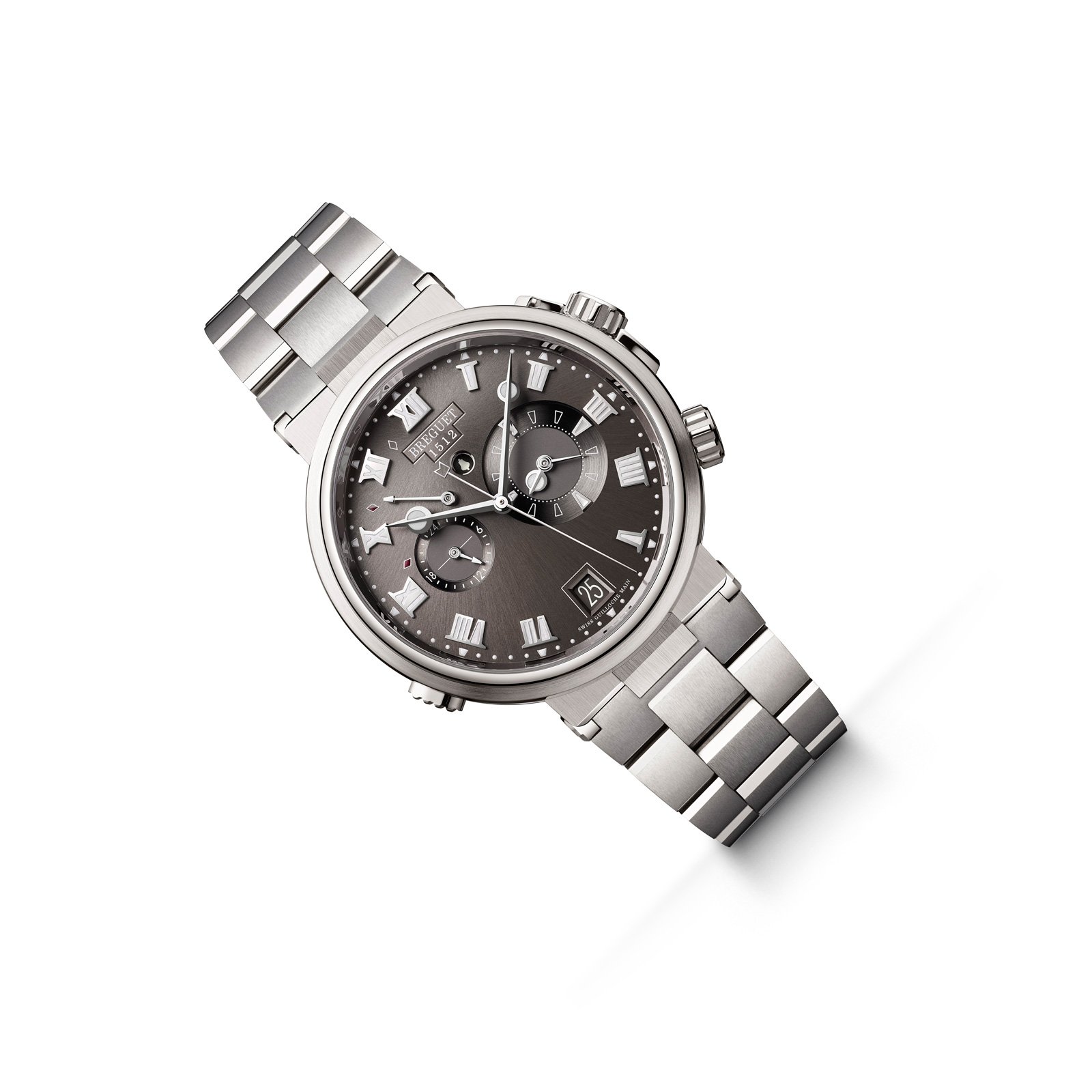
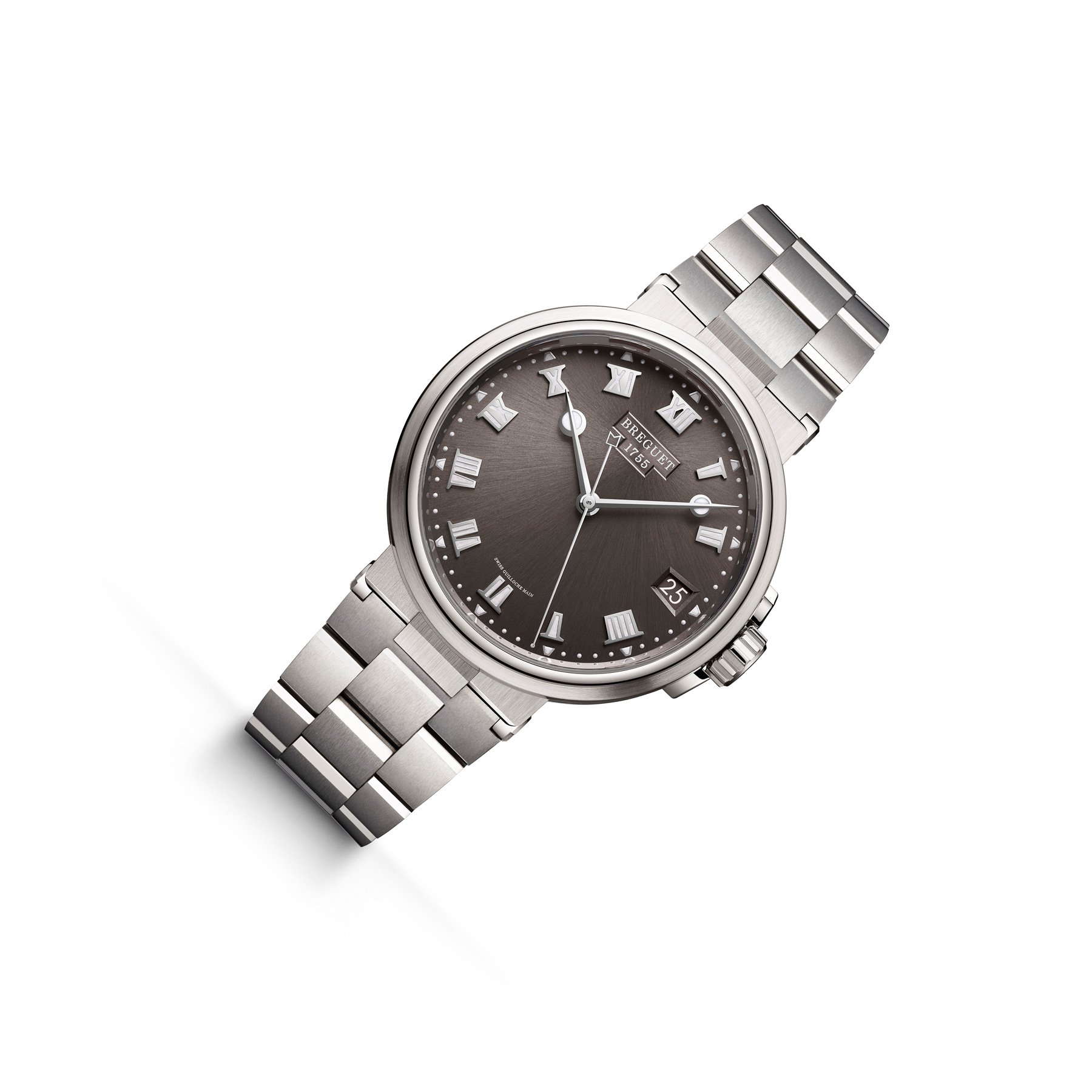
Legitimacy of the tourbillon
Among Abraham-Louis Breguet’s many achievements, we find of course the tourbillon, of which he was the brilliant inventor.
It is therefore quite natural that the Breguet brand has long made it a specialty, sometimes combining it with a skeletonised movement and/or, as in the example below, with a rare regulator display.
-

- At the Basel Fair in 1993, Breguet presented a Skeleton Tourbillon Regulator, illustrated by Europa Star in its issue 2/1993.
- © Europa Star Archives
As soon as Breguet was taken over by the Swatch Group, a very special effort was made in the legitimate field of the tourbillon. Thus, 2006 saw the introduction of the first double tourbillon and, in 2007, the Tradition 7047 Grande Complication watch with a tourbillon with rocket-chain transmission.
In 2013, Breguet introduced its extra-flat automatic tourbillon 5377. This other Grande Complication is distinguished by its out-of-the-ordinary tourbillon, the execution of which has been the subject of several patents. The tourbillon cage is made of titanium and the hairspring of silicon, while the escapement is made of silicon and non-magnetic steel.
It is this same Calibre 581 that we find today, now extremely skeletonised.
-

- This year, Breguet is introducing the Extra Flat Skeleton Tourbillon 5395 to its Classique collection. Silicon has been incorporated into the flat spiral anchor escapement. Note the remarkable slimness of the movement, with its 3 mm thickness.
The calibre 581, with its 3 mm thickness, is one of the thinnest automatic tourbillon movements in the world. Its peripheral oscillating weight is a major element, but it also has the advantage of providing a full view of the movement, whose very particular architecture is obtained thanks to the titanium cage which meshes directly with the gear train, and a silicon escapement whose curved construction opens up a great deal of space.
This exclusive structure is perfectly highlighted here thanks to a bold skeleton design. The gold plate and bridges (hardened specifically to allow the operation) were hollowed out and, in total, nearly 50% of the material was removed to obtain superlative transparency. Engraving, guilloché and bevelling add to the exclusivity of this piece.
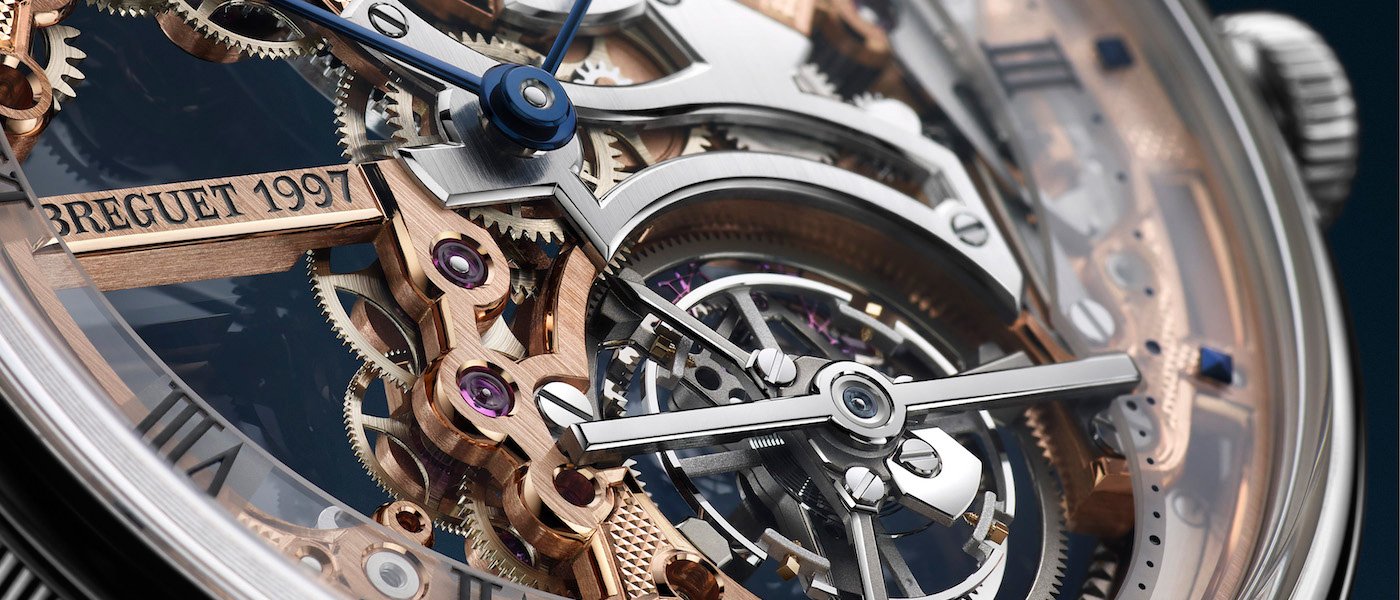
The iterations of the Queen of Naples
Of the watch often referred to as “probably the first wristwatch in the world”, we have nothing but written documents, the watch having disappeared in 1855. It was ordered in 1810 from Abraham-Louis Breguet by Napoleon’s sister Caroline Murat, Queen of Naples, and delivered in 1812 (she went on to order no fewer than 34 watches and clocks from Breguet).
As described in the register, it is a “very flat repeating watch No. 2639, guilloché gold case, silver dial, Arabic numerals, thermometer and advance-delay outside the dial, said watch fitting into a hair bracelet trimmed with gold, at will, simple gold key, another bracelet trimmed with gold also, in a red leather case”.
In 2002, Nicolas Hayek decided to recreate it. It is true feat of reconstruction, carried out with the help of the few elements known about it, including the ovoid shape that is so particular and distinctive.
-

- The Queen of Naples, as it appeared in Europa Star 1/2006.
- © Europa Star Archives
In the years following its launch, the new Queen of Naples proved to be a great success. With its egg shape, its crown with cabochon at 4 o’clock, its attachment to the ball-shaped bracelet at 6 o’clock, and its fine satin or gold braided bracelets, it quickly became a stylistic icon, easily recognisable in all its different forms.
With its off-centre hour and minute dial pointing downwards, it leaves a large space for decoration and complications. In addition, it lends itself very gracefully to the setting of its bezel and flange.
Its dial would be reinterpreted over the years in a hundred and one different ways: guilloché, mother-of-pearl, shell, gold or silver, diamonds or coloured stones, as well as complications such as moon phases and repeaters, or playing graphical games with its numbers, proving to be very classic one day and contemporary another. All while remaining true to itself, thanks to the persistence of its own Breguet codes, which remain a constant, reassuring background presence.
The two new products for 2019 provide yet more proof of concept (if any were needed, which it isn’t).
